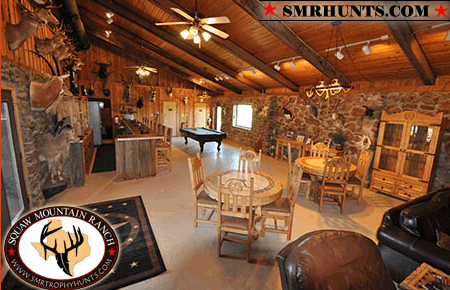The blackbuck antelope, or more commonly called the Indian antelope, originates in Pakistan, India, and Nepal. This species of antelope was given its name back in 1758 by a Swedish zoologist named Carl Linnaeus. They were hunted to extinction in many parts of their native lands, but have since bounced back due to conservation efforts. Thankfully, you can now see the blackbuck antelope in many zoos and conservation parks around the world, in addition to many in their native areas.
Blackbuck Antelope Hunts in Texas
What Does the Blackbuck Antelope Look Like?
Males look significantly different than females when looking at the blackbuck antelope. The males are a dark brown or black on the upper half of their body, and white on the inside parts of the lower half. The outsides of their legs are still the dark color that runs across their backs. Females look very similar to white tailed deer in that they are a chestnut brown and often have white spots. Plus, females also have the white inner parts of their lower halves. They are much more muted in color so they blend in with their fawns and their surroundings. Both males and females get to be about 32 inches high at their shoulder. However, males get larger than females do. The average male weighs around 85 pounds, whereas the average female weighs around 60 pounds.
Male blackbuck antelope have corkscrew horns that range in size from 18 inches up to 30 inches. While it is possible, it is very rare that females will develop any horns. Both males and females often have a white chin, plus they have a white mask around their eyes. This helps set them apart from other antelope in the areas they are native to. Typically, blackbuck antelope are most active during the day. They take the night time and rest between grazing. Males create distinct areas where other males are not supposed to enter. However, females can roam around more freely between these different groups.
What Does the Blackbuck Antelope Like to Eat?
Blackbuck antelope love to eat all types of grasses. They will roam around in all types of terrain so long as they are near water and fresh grass. The preference of terrains includes grasslands, so they have plenty to eat, and lightly forested areas. They prefer to avoid rocky terrain whenever possible, but will cross it to get to fresh food and water. Rarely, the blackbuck antelope will be caught grazing on acacia trees. Plus, they will also eat certain types of fruits and berries when they come across them.
Typically, the blackbuck antelope will consume much less during the summer than at other times of the year. They eat the most during the winter months and during the rainy season. The blackbuck antelope does not get much in terms of water from the food it eats. This makes it very important that they stick to areas that have plentiful water within a short distance.
What Are the Breeding Characteristics of the Blackbuck Antelope?
Female blackbuck antelope are considered sexually mature by eight months of age. However, they will not breed prior to turning two years old. Male blackbuck antelope are considered sexually mature at eighteen months of age, but again, they will not breed before two. Blackbuck antelope can breed at any point in time during the year.
Gestation is typically around six months long. There is only one fawn born in most pregnancies as well. It takes nearly a year for the fawn to become fully weaned. They are usually a light shade of yellow at birth, gradually getting darker as they get older. Males do not reach full coloration until they are about three years old. The average lifespan of the blackbuck antelope is approximately 10-15 years, depending on many factors.
Dominant males often copulate with multiple females, and typically have more than one fawn each year. While any time of the year a fawn could be born, most are born mid-spring and mid-fall. This correlates with the males rutting behaviors, and is common no matter what part of the world the blackbuck antelope lives in.
What Type of Concerns Does the Population of Blackbuck Antelope Have?
There are quite a few things that impact the blackbuck antelope population. First, you have natural disasters. When a flood or drought hits their area, it can take them upwards of five years to fully recover. Also, they have many predators. Man pushes in on their territory regularly, making it more difficult for them to find grazing areas. Plus, many of the animals are predators in the areas that blackbuck antelope call home. There are wolves, big cats like cheetahs, and also pariah dogs that feed on these antelope.
Deforestation also affects the blackbuck antelope. They live in areas with a lot of grass, which is sometimes also a lightly forested environment. When those forests are cut down, the food source for the antelope is also destroyed. This can cut down on the current population, plus the reproduction and care for new fawns. When a mother antelope struggles to find enough food, it can impact her ability to nurse her fawn and provide the necessary nutrients for survival.
Come in and See the Blackbuck Antelope for Yourself
The blackbuck is considered a sacred animal to those who follow Hinduism. They are revered and not to be hunted by those followers. However, they are not considered sacred by any other religion, and have often been hunted throughout history. The number of blackbuck antelope is significantly higher than it was just a few decades ago. However, they still face many threats. When you are ready to see what the blackbuck antelope is really like, then Squaw Mountain Ranch is the place you want to go. We treasure these animals, and love educating those that come to see them in person.

